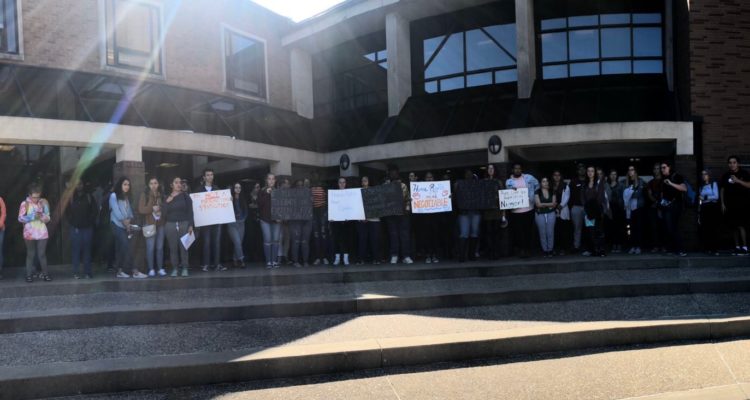Note: Some images contained in this story are offensive.
By Grace Potts and Leah Wilkinson
A large group of students and staff gathered in the quad Tuesday to protest the treatment of minorities on Bellarmine’s campus.
The protest was prompted by a bulletin board — which was put up by a senior resident assistant Sunday evening and removed by a residence life staff member Monday afternoon — but also by various injustices that were met with little to no action in the past.
The bulletin board was posted in a residence hall on campus. It was titled “Tolerance” and read: “It doesn’t require you to Like them, or know them, or agree with them, it just requires you to Respect Them”
Underneath the written portion, there were paper figures labeled as the following: atheist, racist, Liberal, Communist, poor, homophobe, Muslim, rich, Jewish and homeless.
A group of students later added sticky notes to the board, commenting on what it was saying. The sticky notes were then removed and the board was taken down.
Bellarmine President Dr. Susan Donovan sent out an email Tuesday afternoon about the bulletin board and protest. “I am writing to you concerning a deeply disturbing matter regarding an offensive and insulting bulletin board that was posted on campus, which was a misguided attempt to raise awareness around diversity issues on campus,” she wrote.
Knights Media Network reached out to the person who created the board but did not receive a response.
It turns out the bulletin board was just scratching the surface of a lengthy list of issues within the Bellarmine community.
James Harwell, a junior, was at the protest and has been involved in spreading the word about the bulletin board that began the discussion.
“I’m honestly not surprised about what happened because people of color have experienced oppression and biased incidents [on campus] for years now,” he said.
The way students have shared their experiences shows how much they have been affected. They have taken to social media to vent these challenges.
“Our students’ willingness to participate in the listening sessions and demonstration is to be applauded,” said Dr. Helen Grace Ryan, vice president of student affairs.
“Education and community conversation are ways in which we can continue to bridge the divide. Doing so is central to our mission as an institution and a place of learning. We have work to do and are committed to making progress,” she said.
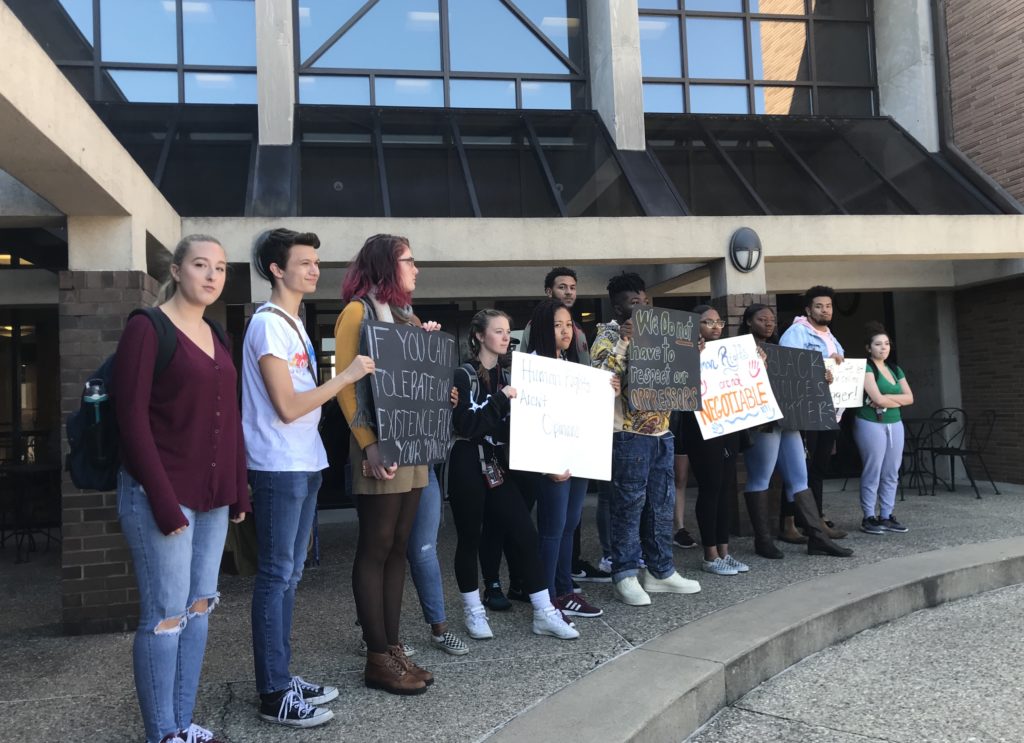
Professor Megan Burnett stood alongside students at the protest.
“I was both impressed by the students who had the courage to protest and chagrined that such a protest needed to occur on our campus,” Burnett said.
Burnett was not the only faculty member standing with the large group. Several other professors and leaders were present and standing in solidarity.
“While I know that not everyone accepts others into their personal circle of friends and relationships for various reasons, I do expect that our community of educators and learners accepts everyone as equal and deserving of respect and respectful treatment,” Burnett said.
Markita Oliver is a junior who attended the protest.
“I just want people to know that we don’t want any special treatment. Students of color just want to be treated like students. We took the same tests to get here, pay the same tuition and we deserve the same respect as everyone else,” she said.
Many students who are not people of color or LGBTQ+ joined the protest to stand in solidarity with those who were directly affected.
“What warmed my heart about today is how allies and people from the communities were able to come together and stand up and say that we will not tolerate or respect anyone that oppresses us,” Harwell said.
LGBTQ+ junior Jordan Stacy was also involved in the protest.
Stacy said: “I’m most upset due to the fact [that] many people on this campus don’t see the inherent issue with the bulletin board and why so many of us are upset. We’ve been hearing ‘calm down it’s just a bulletin board’ or ‘I don’t see what’s wrong with it,’ and that’s exactly the issue we want to bring to light.”
According to Harwell, Bellarmine students of color make up only 19% of the population. “It also did not surprise me how certain students who are well known did not come to show support of their community, but no matter what we will always be 19 strong,” he said.
“#19strong” and “#theintolerant19” have become the new empowering and self-identifying way that students of color are standing together on social media. The bulletin board’s main message was to have tolerance and respect for the oppressor.
According to senior Taylor Garrison, upperclassmen in the past lost hope Bellarmine officials would make changes and she said she can feel herself beginning to do the same.
“Everyone wants to have talks, discussions, conversations, etc. over and over, but it’s all talk and never any action,” Garrison said.
According to Garrison, students have been in contact with provosts, deans, Associate Vice President for Student Affairs Dr. Patrick Englert, Donovan, Vice President for Student Affairs Dr. Helen Grace Ryan and others, yet they said they’ve seen no results.
“People act surprised when they see these demonstrations, but it’s the same thing year after year. You either do not care, or you are not paying attention,” Garrison said.
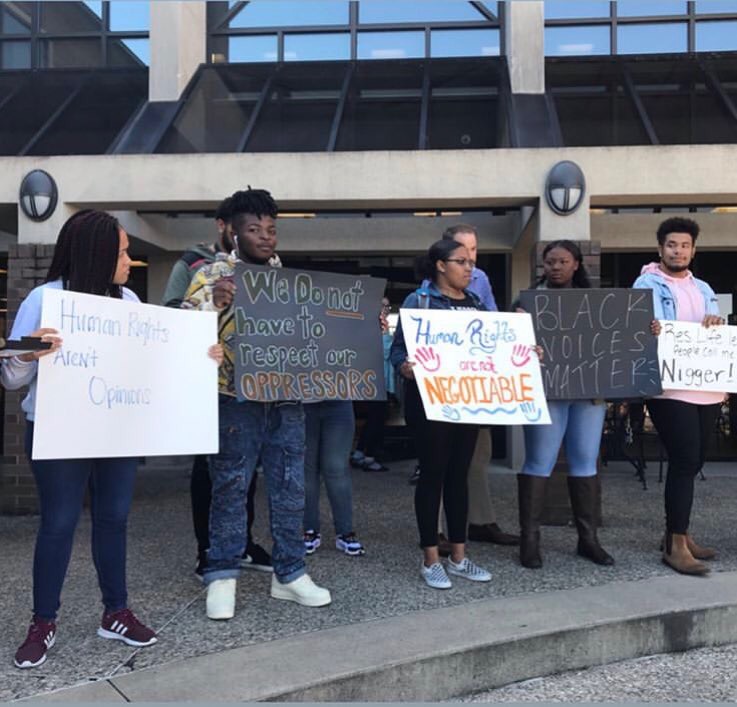
Khiarah Craig, a Bellarmine junior, is the vice president of the Black Student Union. She said, “I, like many students, believe that this instance is 100% indicative of Bellarmine’s current attitude toward inclusion and justice.”
Craig said the bulletin board was not an isolated incident, but it is another reason to bring awareness to social justice issues.
Kelze’ Riley, a junior political science major and SGA vice president of community engagement and campus culture, said, “As a residence life staff member, I feel it is important to say that this bulletin board is not reflective of the overall beliefs of residence life.”
Riley said walking into the Office of Identity and Inclusion held new emotions for her: embarrassment and anger.
“This situation fueled anger in me, and I felt like this protest was my way to show that anger productively. This is unacceptable that we have to explain to our oppressors our qualms,” she said.
Junior Grace Michels, an RA and also a work-study student for the Office of Identity and Inclusion, was involved with the protest as well.
“I will not ‘tolerate’ the opinions of those who actively discriminate against not only my existence, but the existence of other students who belong to marginalized groups,” Michels said.
Many students, including Michels, called for action from allies.
“I urge everyone, no matter whether they personally identify as a marginalized group or not, to stand up and speak out against the inequalities on this campus,” she said.
Donovan held a meeting with students Tuesday evening, and many students were emotional and shared their personal experiences of bias at Bellarmine.
“We worked with expanding the [Office of Identity and Inclusion] to diversify hires in terms of faculty and staff and I know we have a lot of work to do, and I think it’s good that we’re talking together to figure out where the priorities need to start,” Donovan said.
Students said the OII shouldn’t be the go-to place for support for minorities, arguing that the entire campus should be accepting and understanding.
“How can I do my job if I feel forgotten? If I feel invisible?” sophomore RA Ana Mort said in Tuesday’s meeting, expressing her feelings regarding the way she’s been treated as a minority on campus.
Senior Marley Alexander shared her thoughts on residence life specifically.
“I think it would be foolish to act like this was the first time that bigoted things have come out of [the department of residence life],” she said.
Students also expressed their concerns regarding the lack of people who are actually retaining information that has been shared through programs such as diversity training.
“We’ve been educating a lot,” junior Moriah Levier said in Tuesday’s meeting, explaining that the university needs to do more than just have a few educational programs on equality and diversity every once in a while.
Junior Colleen Begley also shared her thoughts on the lack of training in certain areas such as the acceptance of LGBTQ+ individuals.
“I feel like there’s not enough training for the way that we talk about different identities and the way that we talk about the LGBTQ+ communities specifically, as well as any other identity,” she said.
Leslie Maxie, director of residence life, said students quite frequently bring up the question, “How can we build upon more inclusivity in residence hall bathrooms?”
“I met with students last year [who] told me about their concerns about going to the bathroom,” she said, adding that residence life is hoping to add more non-gendered restrooms across campus.
In Tuesday’s meeting, junior Vickie Hillary challenged Donovan on what Hillary sees as the lack of actions being taken both in the past and present.
“To be honest, I am so disappointed by your answers here today, Dr. Donovan,” she said.
“The only answers you’ve given today [to] the questions we’ve brought up were to expand the OII, and like I said, the burden is still placed on the OII, when the burden should be placed on the university and [the focus should be on] working with these students.”
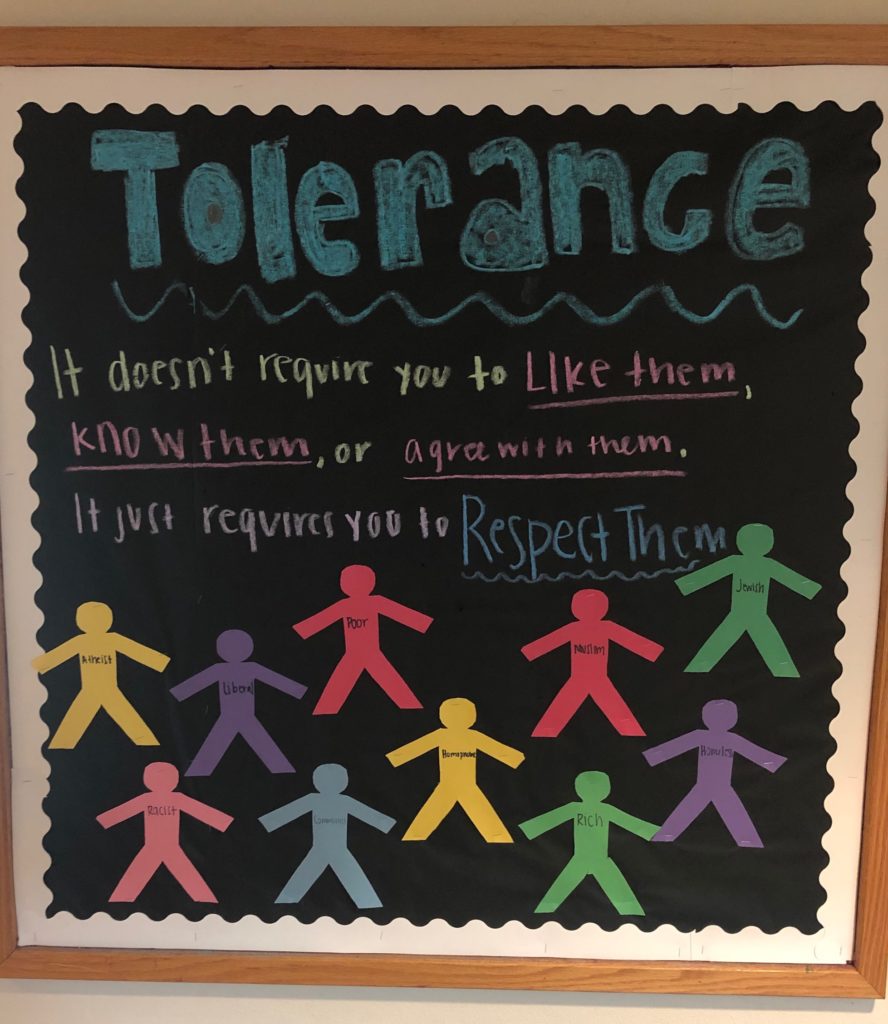
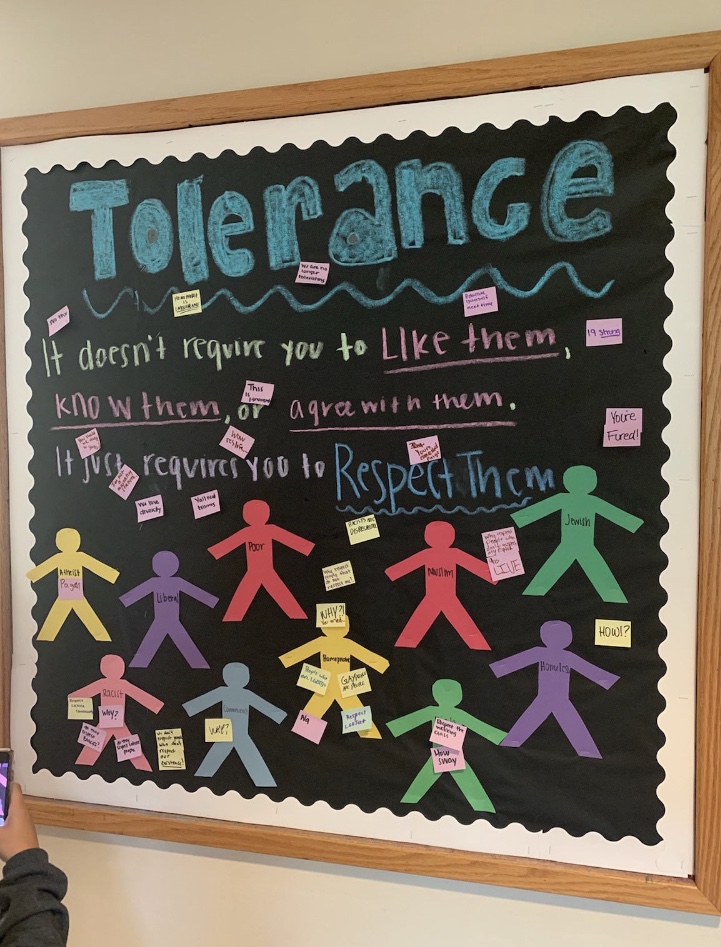
A large number of the students in Tuesday’s meeting go to the OII on a regular basis.
OII Director Joe Frazier said “it’s going to take some time” for the university to make steps toward equality.
At the meeting, Riley said: “I feel like this whole thing’s been handled poorly, and I feel like the answers we’ve been provided are poor, and I feel like we’re not asking you to change the law, Dr. Donovan, that’s not what we ask. We ask for your professional opinion and how to go forth.”
By the end of the meeting, it became clear that students wonder what actions will be taken moving forward to prevent such incidents from continuing to happen on campus.
“We need to figure out effective structures for how to take each of these on,” Donovan said.
The protest and meeting gave students the opportunity to be heard, but the signs at the protest also shared stories.
“Some of the signs the students created told of awful treatment they experienced on our campus,” said Burnett. “While that was bad enough, it was made doubly awful to me when it was clear that the negative treatment was tolerated by others of authority.”
Donovan’s email also mentioned two “listening and action-focused sessions planned for the campus community,” which are scheduled for Oct. 10 and Oct. 17 from 3:30 to 5 p.m. in CNMH 276. These are other opportunities for the Bellarmine community to ask questions and share concerns.
There will also be a BU Dialogue on “Civility on a College Campus” on Oct. 10 from 11 a.m. to noon in GBCH 230.
“I want to learn from the students and allow their courage to inspire me to greater action and change within myself and my classroom,” Burnett said.

